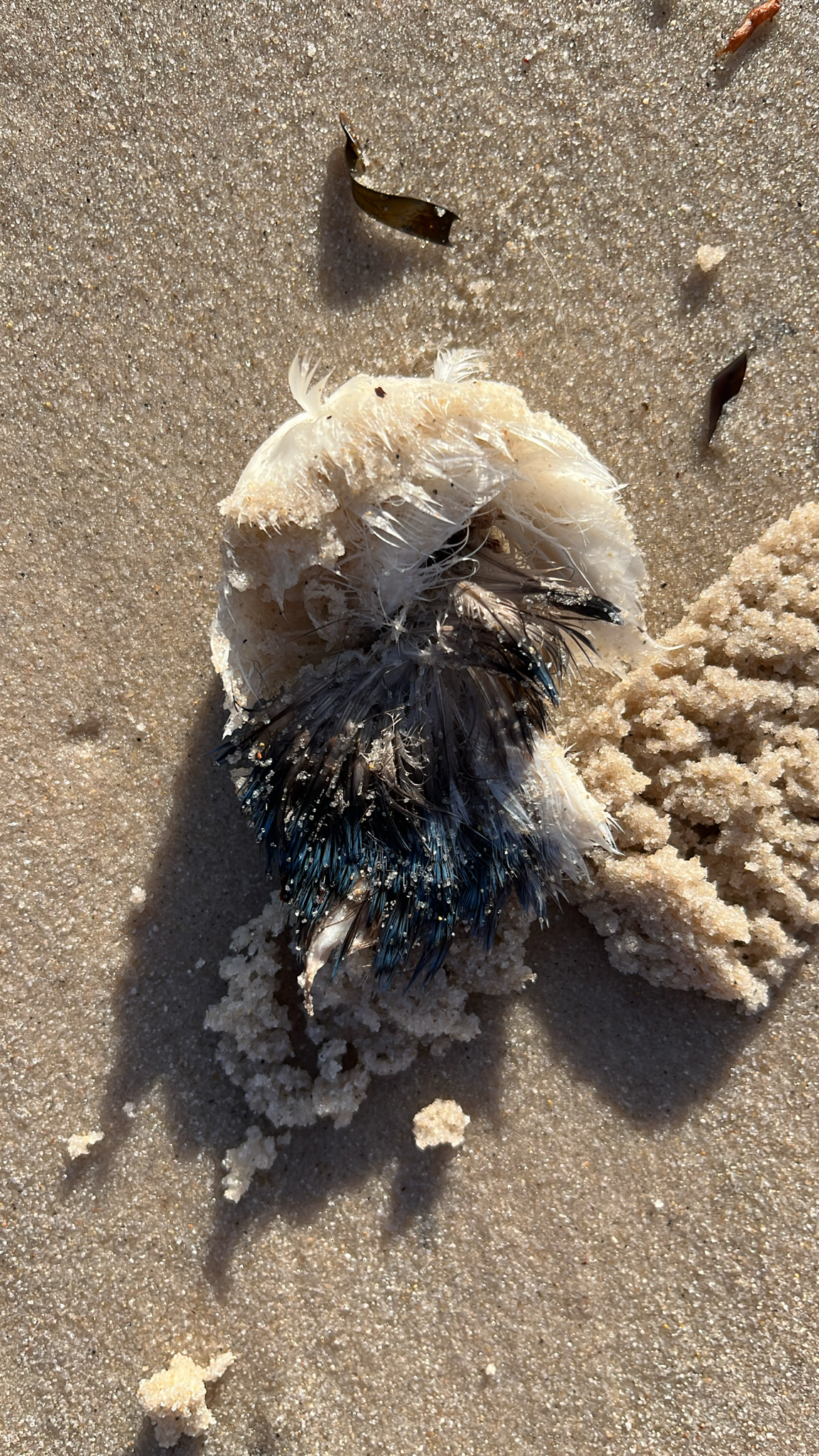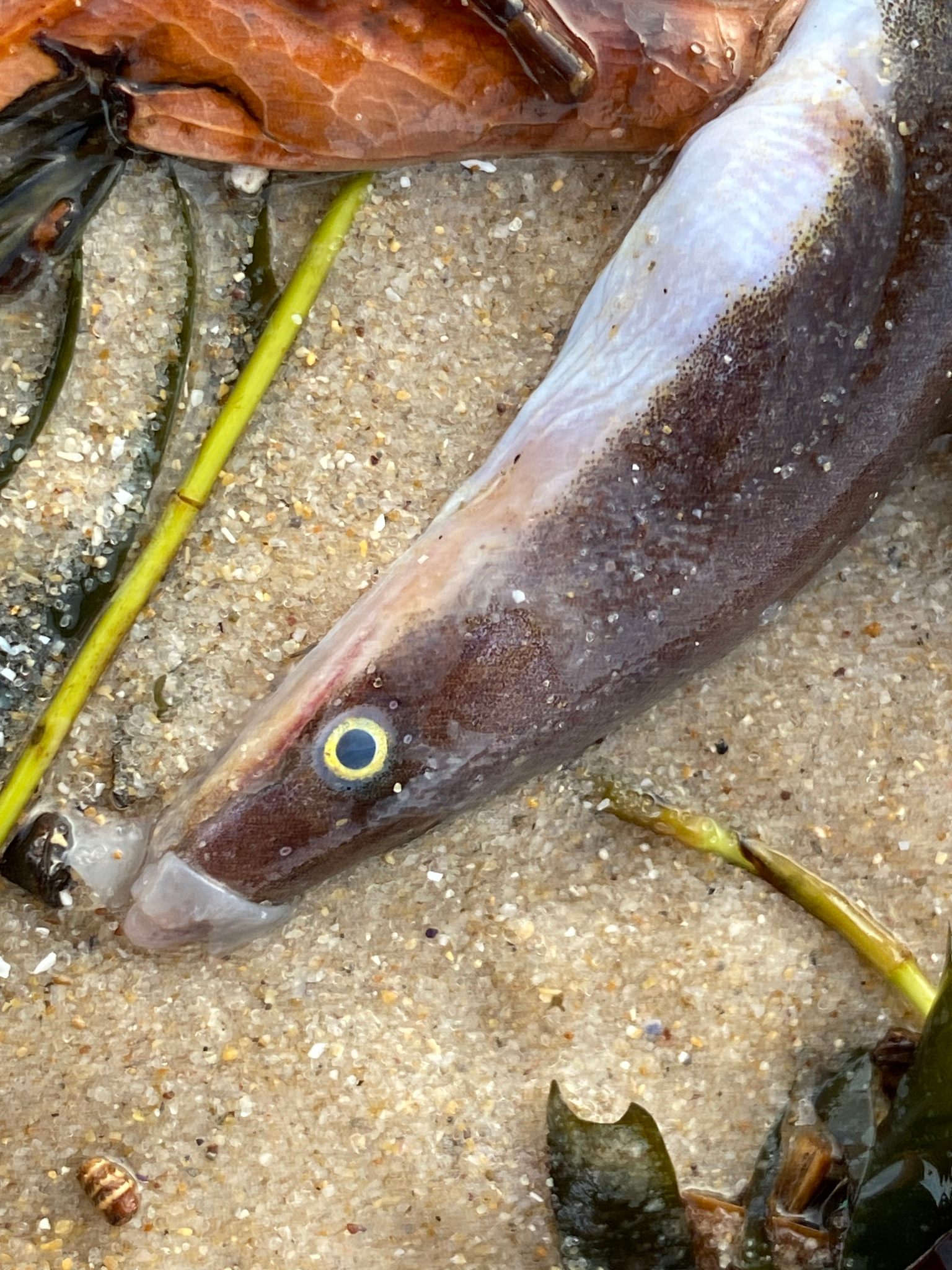For five months, a toxic algal bloom off South Australia’s Fleurieu Peninsula has been killing marine life and making swimming and surfing unsafe. Instead of easing with the coming of winter as was expected, the affected area has expanded, including to the Gulf of St Vincent on which Adelaide sits. Damage has worsened, and volunteers have documented 13,700 dead animals, mostly fish, washed up on the region’s beaches, but the true toll is almost certainly orders of magnitude larger. Biologists fear this may become the new normal.
The bloom is caused by an excess of Karenia mikimotoi, a type of plankton native to the area, although other species may also have a part in the yellow-brown foam seen on affected shorelines. Excessive flourishing of any plankton consumes oxygen dissolved in the water that fish and other organisms need to survive, creating a dead zone. However, K. mikimotoi goes further, producing toxins that kill fish and leave mammals, including humans, who venture into the water coughing and with eye inflammation.
The worst damage is probably occurring at depth, since one of K. mikimotoi‘s advantages over some other plankton is its capacity to move up and down the water column. With divers understandably reluctant to get down there to check, however, we don’t know the full story, although remotely operated vehicles have recently been deployed.
A hundred kilometers of coastline are affected, and harm is thought to have occurred over 5,000 square kilometers (2,000 square miles), an area larger than two US states. Citizen scientists are documenting animal deaths in an iNaturalist folder and have recorded 458 species so far. Reports have come from the Victorian border and Coorabie, 1,000 kilometers (600 miles) apart.

Dead fish may not tug at the heartstrings, but this little penguin found on Caralinka Beach on the Fleurieu Peninsula is a different matter, although whether it was directly killed by the algae or died from lack of food is unknown.
Professor Shauna Murray of the University of Technology, Sydney, said the event was “Larger and more broad-ranging” than any other harmful algal bloom (HAB) event in Australia’s history, in a statement.
Locals, the Great Southern Reef Foundation, and South Australian Greens Senator Sarah Hanson-Young have called for a declaration of national disaster and an inquiry to be held. The bloom failed to become an issue during the recent federal election, and it was only this week that the federal environment minister sent the head of the environment, reef and ocean division to the state to investigate.
Declaration of the event as a national emergency would improve the prospects of federal funding for rehabilitation and to make disaster payments for farmers of shellfish and abalone, and others whose income has been affected.
“In my opinion, the magnitude of this algae bloom and devastation of fish and marine life could meet the definition of a national disaster. It could also qualify as a ‘Matter of National Environmental Significance’ under the Commonwealth Environmental legislation,” said Dr Ian Wright of Western Sydney University.
“It doesn’t take a marine scientist to see that there is an ecological disaster unfolding in South Australia,” said Dr Zoe Doubleday of the University of South Australia. “While most of us can’t see the fire burning, we can smell the smoke. It is a disaster of national significance, not just because of the environmental and economic impacts, but because the cause is not something we’re used to working with – not at this scale, at least.
“While harmful algal blooms have been known to science for a long time, the severity, duration, and spread of this HAB is something I don’t think Australia has seen before and I think it is in Australia’s interest to understand everything we can about the bloom, as well as mitigation and recovery strategies, before it happens again, which could be very well somewhere else,” Doubleday continued.
The bloom almost certainly has multiple causes, including nutrients flushed into the oceans by the 2002 floods and brought to the surface by recent overturning. However, Faith Coleman of Federation University Australia, whose PhD on the area is under examination, told The Guardian last summer’s extreme marine heatwave was the dominant factor.
Although a combination of influences made the heat wave unusual, rising global temperatures inevitably mean it will be back sooner or later unless the world gets greenhouse gas emissions under control.
Meanwhile, conspiracy theories flourish, despite the implausibility of some and impossibility of others (one claim blames the event on Chinese warships 2,000 kilometers away). “I’m spending an awful lot of time doing something I hate to do, which is myth busting, whereas I’d prefer to be concentrating on solving the problem,” Coleman told The Guardian.

The consequences have reached Adelaide, for example, this Longfinned wormeel found on Seacliff Beach.
“There’s no quick fix, but solutions include reducing nutrient runoff, better coastal monitoring (more funding!!), and acting on climate change — the key driver making these events more frequent and intense,” said Dr Nina Wootton of the University of Adelaide.
Restoration of seagrasses and kelp forests has also been proposed as a way to prevent future outbreaks. Whether this would suppress blooms, it would at least provide global benefits through carbon storage, but natural is difficult to achieve while the bloom is underway.
There are hopes incoming storm activity will end the bloom, at least for this year, with wave activity dispersing the algae and cold freshwater affecting its growth. However, expectations that a major storm event in May would do the same thing were not met.
Source Link: Australia’s Largest And Longest-Lasting Toxic Algal Bloom Has Killed 14,000 Animals So Far